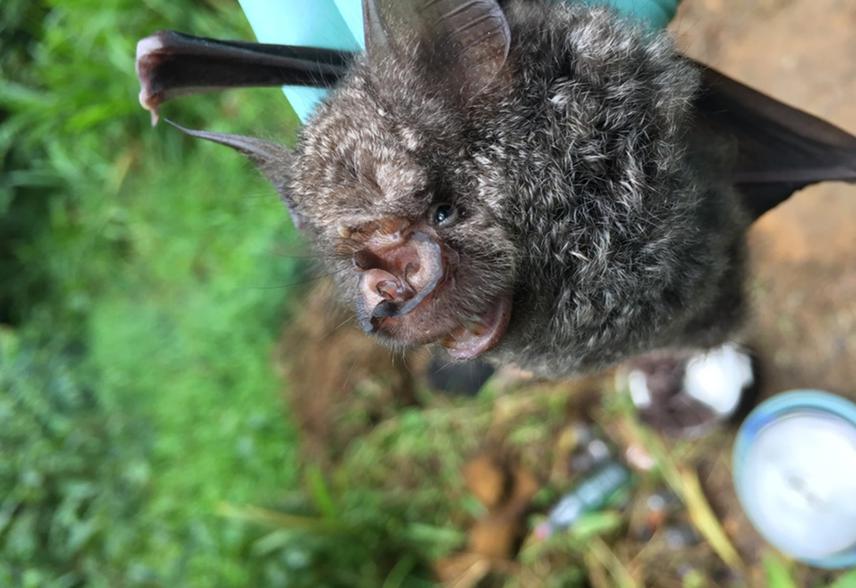Sock Bell Aristide Junior
The biodiversity of bats in Cameroon is one of the least known and threatened through deforestation and agriculture. In order to highlight conservation prospects in respect to bat populations in one of main diversified and threatened forest area of the Littoral region of Cameroon, an assessment on diversity, population structure and population survey of bats will be carried out in Ebo Forest using mist netting and echolocation recording methods. Given their importance for the local biodiversity conservation, we hope to provide baseline data, considering local knowledges, attitudes and practices, for the implementation of a wildlife management policy by local authorities and government.

Hipposideros cyclops.
The Ebo Forest is a mosaic of lowland and sub montane forest located in the Littoral region of Cameroon, North of the Sanaga River, a recurrent geographic barrier that persisted in times and acted for the diversification of several taxa in Central Africa and the Gulf of Guinea Biodiversity Hotspot (Oates et al. 2004). Separated from Lowland forests of South of Sanaga River and highland habitats of the Cameroon Volcanic Line Ecoregion in the North, Ebo is considered as having a high biogeographic importance (Fa et al. 2006). Previous works have highlighted the huge species richness of several taxa of animals and plants in this forest (Fotso et al., 2001; Mareike et al., 2011; Morgan, 2011; Whytock et al., 2014; WFN, 2019). Situated less than 50 Km from Douala, Ebo forest is under several threats due to high demand for food, building material and industrialization.
According to recent works, it is one of the main sites in the country that supply local markets in bushmeat. With the recurrent needs of lands for agriculture, the greed of several agribusiness firms has recently increased. Large parts of Ebo forest are now in the process of being granted to different companies for palm oil and rubber productions and transformation. Since efforts made by several NGOs seem still insufficient, information’s from several taxa are needed to highlight the need of the classification of the proposed area as National Park.
A study on local diversity and population structure, focused on data on the status of species with a high conservation concern, will be helpful to evidence the importance of bats in Littoral ecosystems. An inventory based on combined data from standard trapping procedure and sound records will be thus necessary to produce a confident checklist showing the real contribution of Ebo forest area to the national biodiversity of bats. A particular emphasis will focus on species with an interest in conservation (new to science, restricted distribution area, decreasing population trend, high IUCN conservation status). For these species, we hope to produce data that will be helpful to evaluate their local population trend. Given the importance of bats for conservation concerns and the epidemiology of zoonosis, data on knowledges, attitudes and practices of local population will be also collected from villages near sampling sites.
Header: Rousettus aegyptiacus.